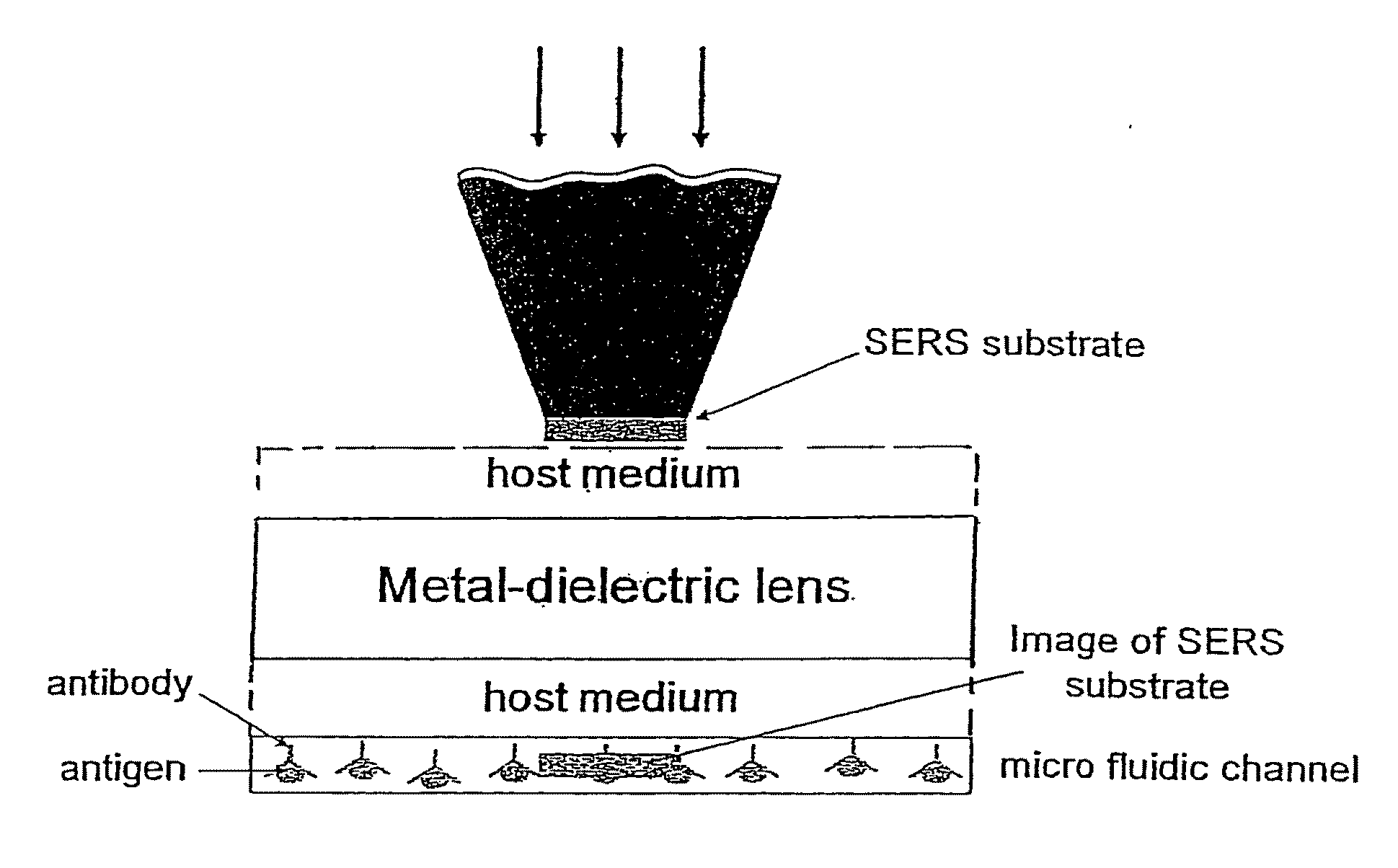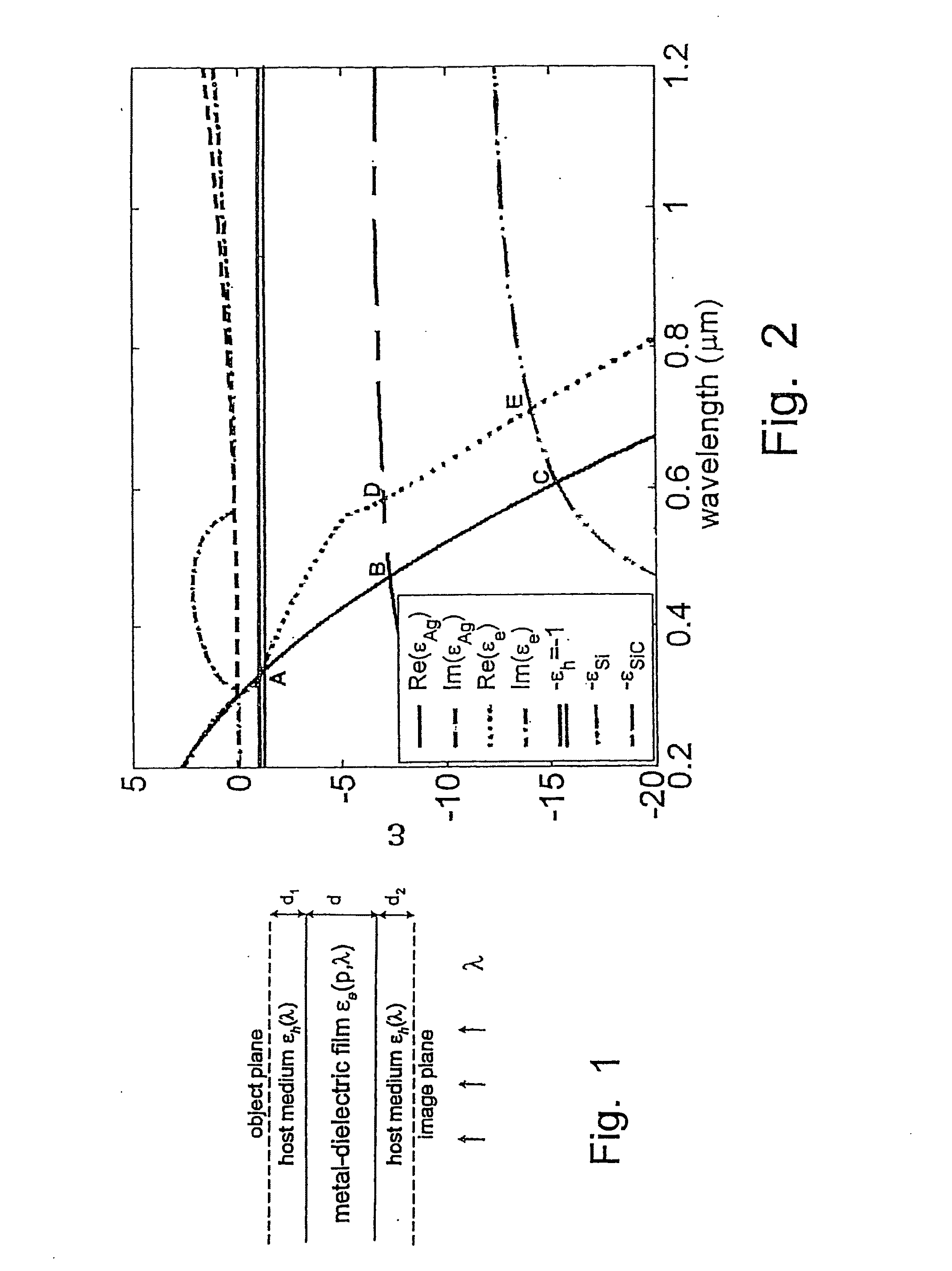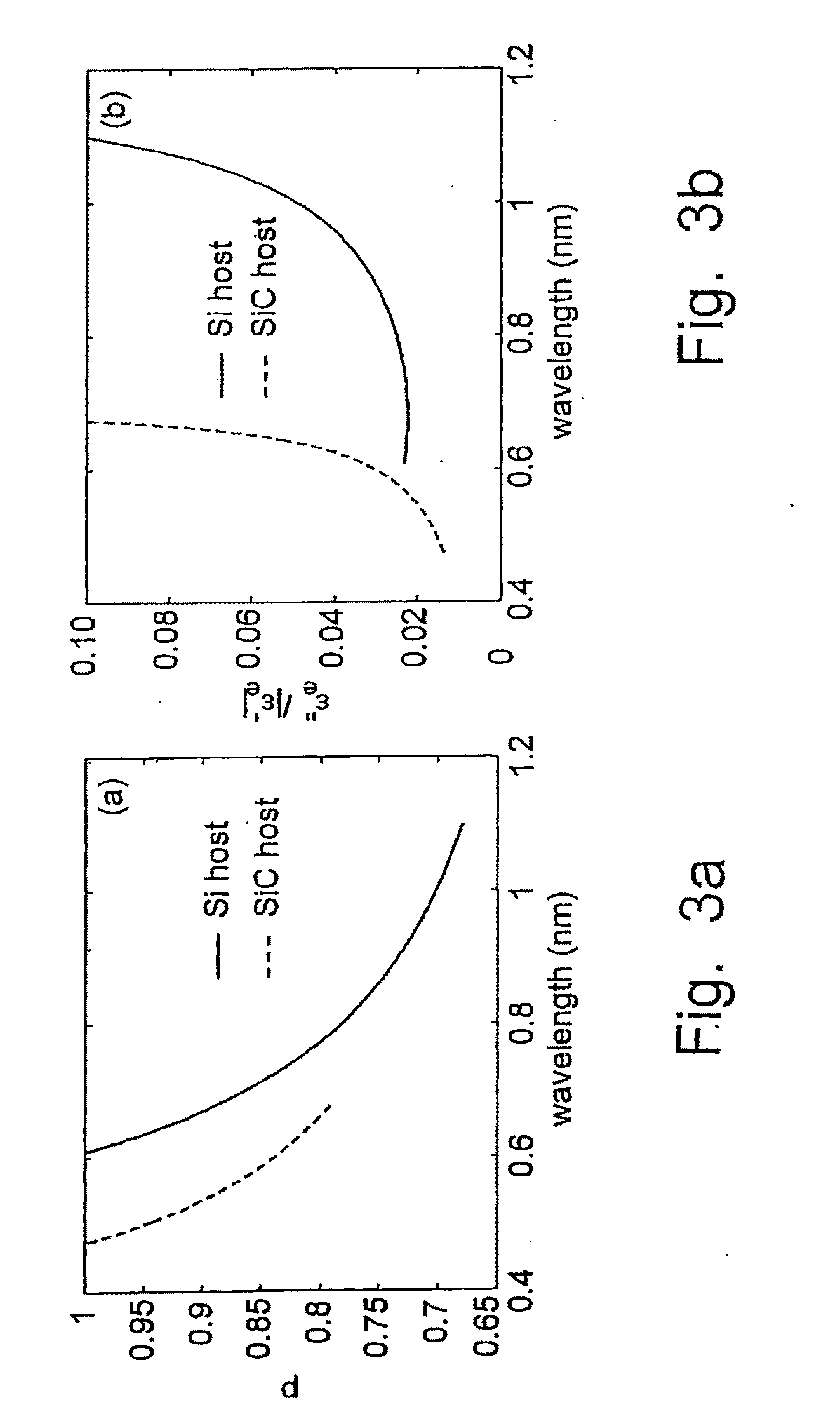Near field super lens employing tunable negative index materials
a negative index material and near field technology, applied in the field of slab lenses, can solve the problems of inability to develop visible or near infrared state, limited linear problems application of sha, etc., and achieve the effect of improving resolution
- Summary
- Abstract
- Description
- Claims
- Application Information
AI Technical Summary
Benefits of technology
Problems solved by technology
Method used
Image
Examples
Embodiment Construction
[0039]A schematic or diagram of a frequency-controllable NFSL is shown in FIG. 1. In this work we use the effective medium theory (EMT) to describe the optical properties of the composite material. The EMT model provides an analytical dependence of the effective dielectric permittivity on the light wavelength λ and on the metal filling factor p, which is the key to realizing the tunable NFSL. The principle of the tunable NFSL operation using Ag—SiO2 film with a metal filling factor p=0.85 is illustrated in FIG. 2. For a pure silver slab, the operational wavelengths determined by the condition Re[εθ(p,λop)]=−εh(λop) are indicated by points A, B, and C for host media of air, SiC and Si, respectively. For the composite NFSL, semiconductor materials like Si and SiC with large εh are beneficial to use as the host materials because they can move λop outside the plasmon absorption band and thus avoid significant losses that are associated with large values of εθ and hence detrimental to th...
PUM
 Login to View More
Login to View More Abstract
Description
Claims
Application Information
 Login to View More
Login to View More - R&D
- Intellectual Property
- Life Sciences
- Materials
- Tech Scout
- Unparalleled Data Quality
- Higher Quality Content
- 60% Fewer Hallucinations
Browse by: Latest US Patents, China's latest patents, Technical Efficacy Thesaurus, Application Domain, Technology Topic, Popular Technical Reports.
© 2025 PatSnap. All rights reserved.Legal|Privacy policy|Modern Slavery Act Transparency Statement|Sitemap|About US| Contact US: help@patsnap.com



